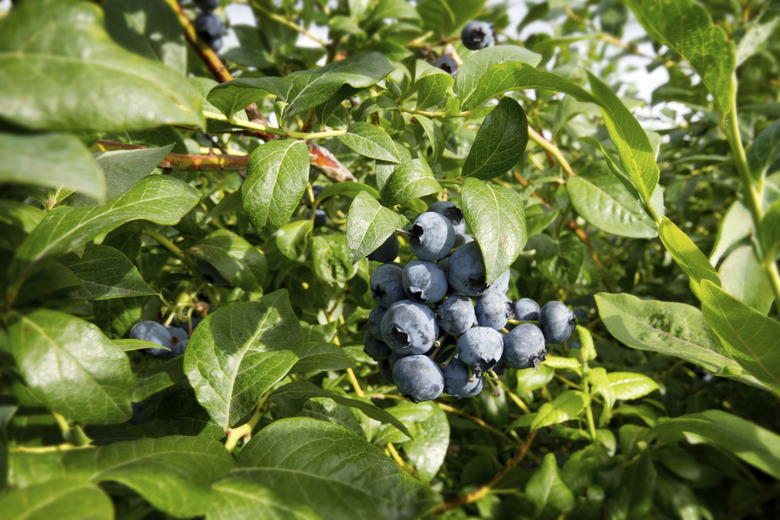How To Treat Blueberry Bushes With Spots On Them
Some diseases leave indelible marks on blueberry bushes (Vaccinium spp.) from the spots they leave behind. Some spots are primarily aesthetic disfigurements, while others compromise the health of the plants and reduce their fruit yields.
Some diseases leave indelible marks on blueberry bushes (Vaccinium spp.) from the spots they leave behind. Some spots are primarily aesthetic disfigurements, while others compromise the health of the plants and reduce their fruit yields. To treat your plants, it's best to get a jump on their growing season and take action before the berries form.
All in the Family
Regardless of species and cultivar, all blueberry shrubs are susceptible to the same spotting diseases. Three primary species of blueberry are native to the U.S.: rabbiteye (Vaccinium ashei), which prospers in warm southern regions across U.S. Department of Agriculture plant hardiness zones 7 through 9; highbush (Vaccinium corymbosum), which grows in USDA zones 3 through 8 and flourishes in the cold climate of Maine and Canada; and lowbush (Vaccinium angustifolium), a perennial in USDA zones 2 through 5, favoring the Midwestern and Mid-Atlantic regions.
Identification Is Key
Blueberry spot characteristics are as varied as the diseases that cause them. Fungal rust diseases, such as from the causal pathogen, Pucciniastrum vaccinii, may cause leaf spots that first appear yellow and then turn reddish-brown on the tops of the leaves and yellowish-brown on the undersides of leaves. Another fungal leaf-spotting disease of significance is caused by the pathogen Exobasidium maculosum, which leaves light green spots on the tops of the leaves and, frequently, white fungal spots on the undersides. This disease may also cause red-ringed spots on the blueberry fruit. Fusicoccum (Fusicoccum putrefaciens) and Phomopsis (Phomopsis vaccinii) cankers leave reddish spots on blueberry stems that form bull's-eye patterns. Two primary viral diseases infect blueberry — tomato ringspot and tobacco ringspot — and cause brown spots on the leaves and stems. Identifying whether a disease is fungal or viral determines the course of action.
- Some diseases leave indelible marks on blueberry bushes (Vaccinium spp.)
- Another fungal leaf-spotting disease of significance is caused by the pathogen Exobasidium maculosum, which leaves light green spots on the tops of the leaves and, frequently, white fungal spots on the undersides.
Fungicides Are Helpful
Lime sulfur is an effective fungicide to use on blueberry fungal diseases. The frequency of application depends on the disease. For example, Exobasidium leaf and fruit spot disease is controlled by a single application of lime sulfur, applied in late winter when plants are dormant. Control other fungal diseases, such as Phomopsis canker, by making two applications of lime sulfur: one after leaf drop in fall and another in late winter to early spring, when the buds swell but before the weather warms up. Make a fungicidal spray by mixing lime sulfur in water. Typically, mix 10 tablespoons — 5 ounces — of lime sulfur in 1 gallon of water and spray all plant surfaces, including the undersides of the leaves, using a tank or handheld sprayer. Follow all label recommendations for frequency and rate of application. Viral diseases cannot be cured, and infected plants should be dug up and disposed of.
- Lime sulfur is an effective fungicide to use on blueberry fungal diseases.
- For example, Exobasidium leaf and fruit spot disease is controlled by a single application of lime sulfur, applied in late winter when plants are dormant.
Sanitation Is a Team Player
The fungi that cause blueberry diseases progress through a life cycle. When diseased leaves and berries fall in autumn, fungal pathogens overwinter in the leaf litter and other debris. When the weather warms in spring, the fungal fruiting bodies produce spores that become airborne and reinfect plants. Scrupulous sanitation helps manage diseases and reduces the need for fungicides by breaking this life cycle. Rake all leaves from underneath plants and discard them, but do not add them to your compost.
